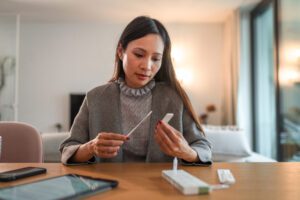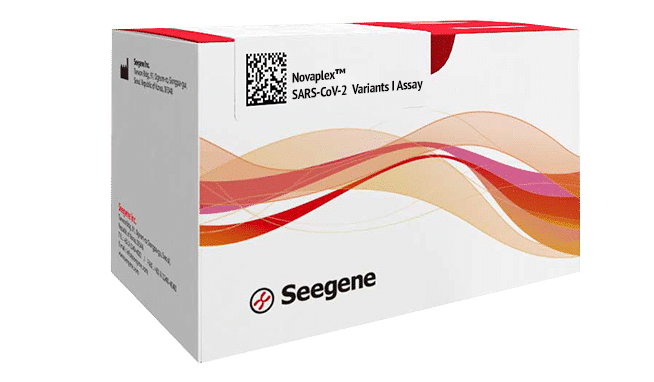The Pitfalls of At-Home COVID-19 Testing
 Throughout the COVID-19 pandemic, identifying individuals who have been infected with SARS-CoV-2 in a reliable and timely manner has been a crucial strategy in controlling the spread of the disease. Over the course of the last two years, several at-home tests have been approved or authorized for individuals to quickly and easily test themselves for COVID-19 at home.
Throughout the COVID-19 pandemic, identifying individuals who have been infected with SARS-CoV-2 in a reliable and timely manner has been a crucial strategy in controlling the spread of the disease. Over the course of the last two years, several at-home tests have been approved or authorized for individuals to quickly and easily test themselves for COVID-19 at home.
Many of these tests can be obtained over the counter at the pharmacy. Users can self-administer the test and interpret their results within an hour or less. Prior to the widespread use of at-home COVID-19 test kits, individuals who suspected they may have been exposed to SARS-CoV-2 would have to wait several days to either book an appointment at a hospital or commercial lab. And even when they did get an appointment, the results would take several hours or even days. In this regard, COVID-19 at-home test kits are convenient, save time and act as helpful screening tools for people who may have an active infection.
The convenience of at-home COVID-19 testing however comes with some pitfalls.
These drawbacks can delay treatment for individuals who need it and could lead to further spread of the virus, putting vulnerable populations at risk.

The Pitfalls of At-Home COVID-19 Testing
Poor Specimen Quality
Regardless of the test type or brand, an inferior quality specimen will lead to inaccurate test results. In a commercial or hospital lab setting, healthcare personnel are trained on the proper way to collect and handle samples for testing.
Not everyone carrying out an at-home COVID-19 test is a trained professional or will collect samples for testing correctly.
Inaccurate sample collection can lead to inaccurate results which are harmful in the long run.
Increased Probability of False Negative Results
Most at-home test kits are rapid antigen tests. Rapid antigen tests tend to have a high incidence of false negatives. The limited sensitivity of antigen detection assays compared with nucleic acid amplification assays is well documented for other respiratory viruses, including influenza and respiratory syncytial virus (RSV).
Antigen tests detect viral proteins. Depending on how long a person has been exposed to the virus, the SARS-CoV-2 virus may not have made the proteins that need to be detected for a test to be deemed positive. Thus, it can take several days after exposure for an antigen test to pick up the proteins made by the virus. Consequently, an individual with a false negative at-home test may unknowingly spread the virus to people at risk for developing severe disease.
Furthermore, as we discussed above, inexperienced users can increase the chances of a false-negative result by collecting samples the wrong way.
Inaccurate Reporting to Public Health Agencies
While some at-home COVID-19 tests have smartphone apps that record and transmit results to public health departments, there are several that don’t have this ability. Different counties and states across the US have different protocols for reporting at-home tests. And even where there may be a way for individuals to relay their results to local public health agencies, there may not be enough education on how to ensure the information is transmitted or people may not comply. Thus, results may not be quickly reported to public health departments.
This can impede the efforts of public health departments to control outbreaks of COVID-19.

At-Home COVID-19 Testing Is Helpful But…
At-home tests are invaluable tools for quickly screening individuals who have a SARS-CoV-2 infection. Individuals can use at-home test kits to inform their decision to quarantine from loved ones, friends, and co-workers when they test positive for the infection. There are drawbacks to at-home COVID-19 test kits, however, and we’ve discussed them in this post. A PCR test is still the most accurate test for COVID-19 and for individuals who are symptomatic, the CDC recommends following up a positive at-home test with a PCR test. Asymptomatic individuals may consider retesting 1-3 days after the original test.
If you study SARS-CoV-2, we invite you to explore Seegene’s latest Novaplex™ SARS-CoV-2 Variants VII Assay (Research Use Only), designed to detect mutations consistent with the Omicron variant, its stealth versions, and Variants of Concern (VOCs) containing the following mutations: 69/70del, E484A, N501Y, RdRP.

